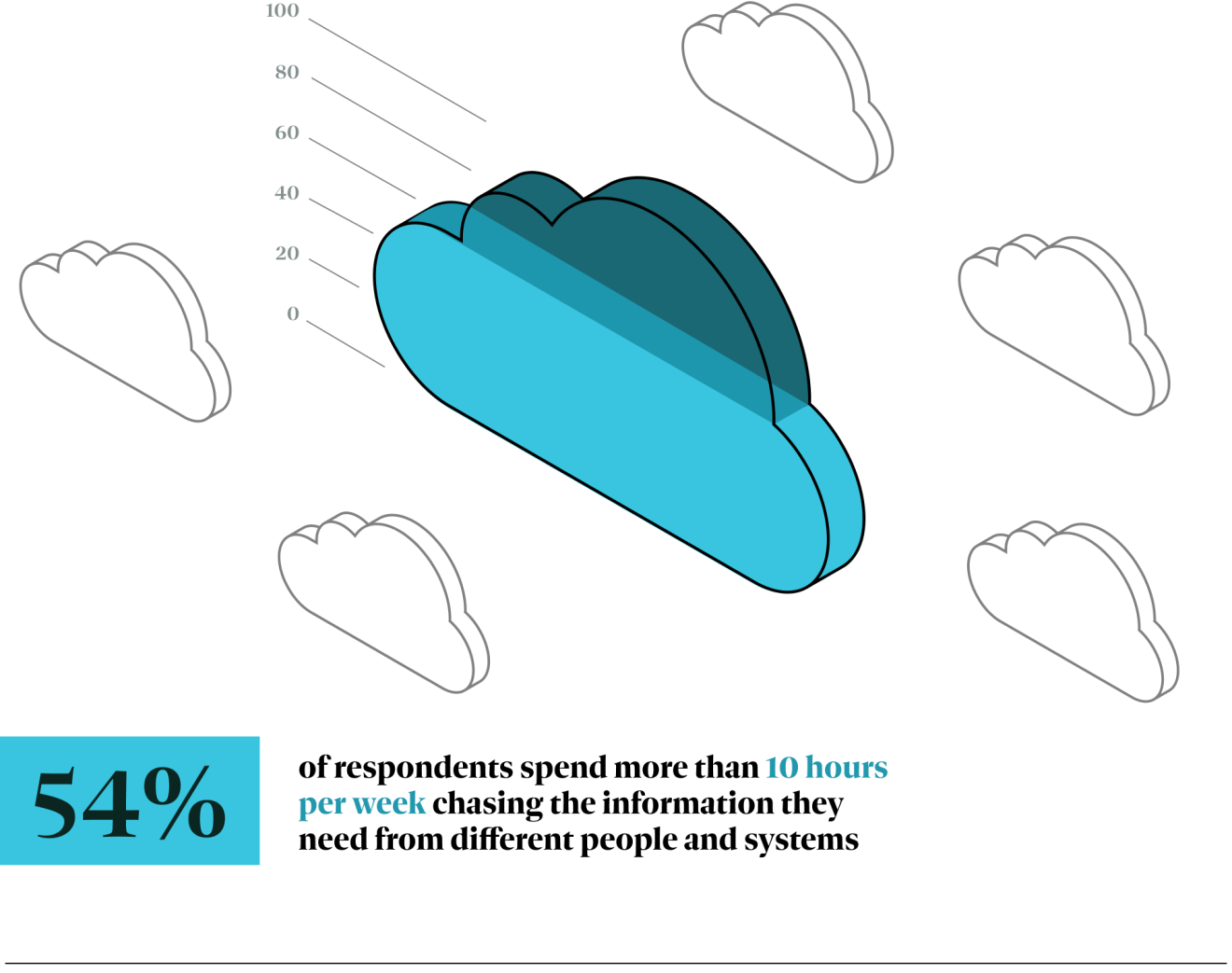
Wasted time, project delays, and overblown budgets: the impact of Gray Work on your organization
How much time do you spend each week chasing information from different people and systems? What about mundane, manual work like updating spreadsheets? And how about reconciling, cross referencing, and updating data?
To answer these and other questions, we invited more than 1,000 U.S. based decision makers to take part in a survey conducted in March and April 2023. Respondents included project managers, IT programmers, engineers, and executives across a wide range of industries, including technology, healthcare, industrial, education, banking / financial services, and retail.
Our report, "Roadblocks to the Dynamic Enterprise," found five key takeaways about lost productivity, disconnected systems, and the "Gray Work" people take on to fill the gaps: the hidden work behind projects, which manifests as ad hoc solutions created to make do and get by. The result is more time spent on manual and administrative tasks and less time available for critical, revenue driving work. That leads to frustrations, project delays, and lost productivity – ultimately impacting the bottom line.
To minimize Gray Work, organizations should begin by recognizing its impact. As organizations continue to find new ways to manage dynamic work, eliminating Gray Work is a major step to doing so successfully. The five charts below are key to understanding the evolving way that organizations and employees are working today.
Disconnected Systems
“Every department has their own system or process that often doesn’t speak well to other departments’ tasks,” one respondent told us. It’s little wonder that more than half of the respondents spend more than ten hours each week hunting for the information they need. Especially when, as another respondent said, “our systems don’t really sync up so we have to manually go back and check all the data.”

Data fragmentation
Survey respondents, on average, use 10 different software solutions to manage complex projects. And the average number of systems used by an organization among respondents? More than 70. Unsurprisingly, a majority of survey respondents (51%) feel overwhelmed to various degrees. To make matters worse, these systems don’t always talk to each other. It results in data fragmentation that comes from a “lack of communication among employees as well as between the systems people are using,” one survey respondent told us.

Lost productivity
Every week, survey respondents are spending a minimum of ten hours on non value add tasks such as duplicative paperwork, verifying data, and redundant activities with some (6% of respondents) spending as many as 31 hours a week, up to more than 40 (3.8% of respondents). When your organization is stuck finding workarounds and shortcuts, and spending such considerable time on these instead of meaningful work, the resulting productivity crisis becomes clear.

Employee frustration
“Not all of the employees are familiar with how each of our systems operate on a daily basis,” one respondent said. As a result, people are being forced to work outside their primary skill set. That’s especially the case when “everyone has a different process for managing projects,” according to another respondent, because of a lack of standard tool sets or procedures – leading to employee frustrations.

Delays big and small
Big projects fail all the time – and some even fail spectacularly. Less than 50 percent come in on budget; just 9 percent come in on budget and on time. And less than 1 percent come in on budget, on time, and deliver the expected benefits. But even if your project isn’t a megaproject, the likelihood of failure remains high, as so many of the survey respondents noted.

Each of these 5 challenges lay out the real challenges of Gray Work - as well as the unique opportunity to unlock new productivity. By finding ways to solve for these challenges and reducing the amount of manual work and workarounds that are taken on to get to success, organizations can get more efficient processes and more satisfied employees. Instead of working around your systems, success comes when you unite your systems and processes.
Read the full Forrester study, “The Total Economic Impact™ Of Quickbase.”



